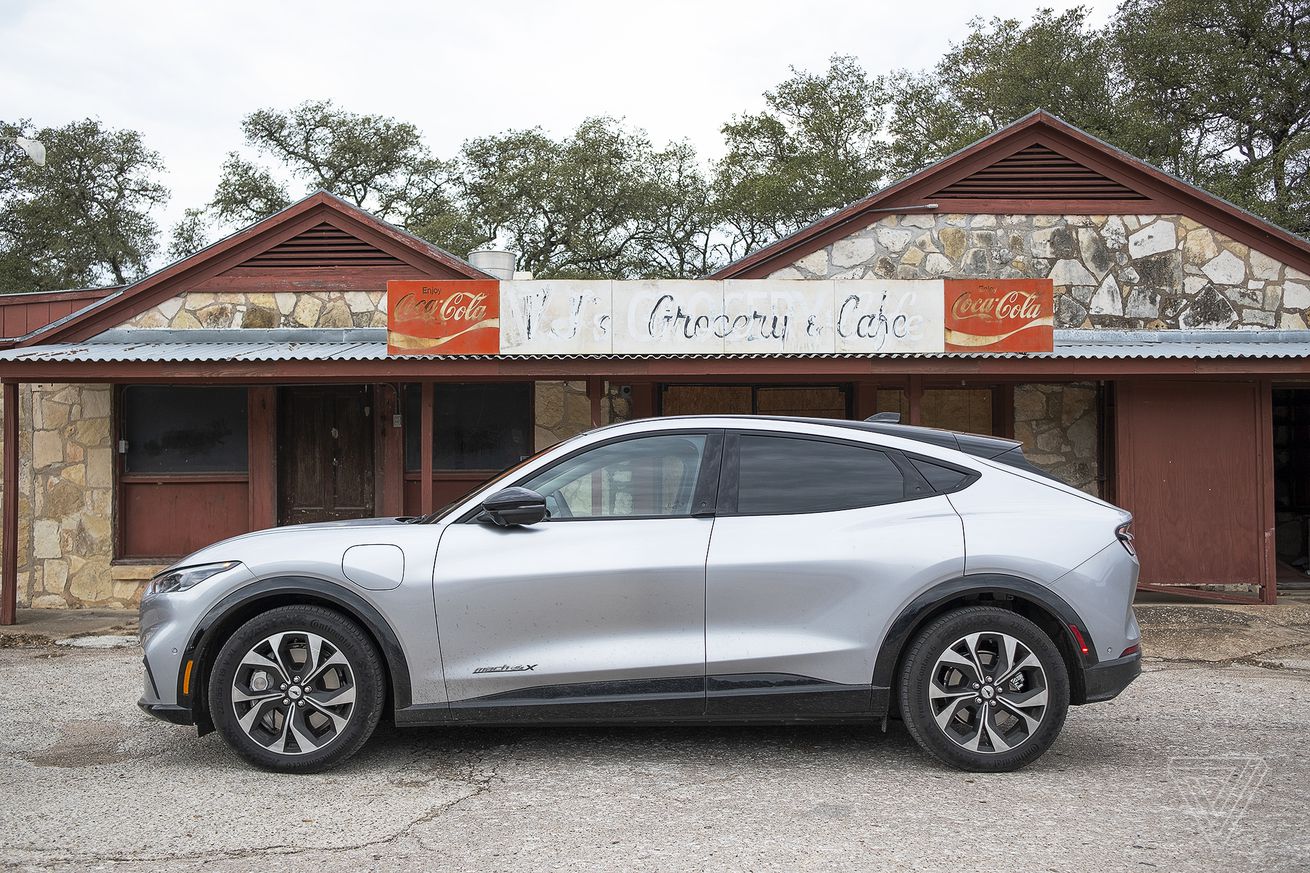
Ford’s slashing Mustang Mach-E prices in latest volley in EV price wars
A little more than six months after it raised prices on the Mustang Mach-E, Ford said it would now be slashing prices on its flagship electric vehicle as well as increasing its production targets for the year.
The Mach-E will drop by an average of around 5.85 percent, depending on the trim level. (Some versions are seeing steeper discounts than others.) According to Marin Gjaja, chief customer officer for Ford Model e division, the “center cut” discount was roughly $4,500.
Here’s a breakdown of the new prices:
Ford Mustang Mach-E price cuts, 2023
| 2023 Mustang Mach-E | Former MSRP | Updated MSRP | Delta |
|---|---|---|---|
| Select RWD Standard Range | $46,895 | $45,995 | $900 |
| Select eAWD Standard Range | $49,595 | $48,995 | $600 |
| California Route 1 eAWD Extended Range | $63,575 | $57,995 | $5,580 |
| Premium RWD Standard Range | $54,975 | $50,995 | $3,980 |
| Premium eAWD Standard Range | $57,675 | $53,995 | $3,680 |
| GT Extended Range | $69,895 | $63,995 | $5,900 |
| Extended Range Battery | $8,600 | $7,000 | $1,600 |
| Nite Pony Appearance Package | $800 | $800 | $0 |
| GT Performance Package | $6,000 | $6,000 | $0 |
The company also said it was expanding the production capacity for the Mach-E, opening new space in its factory and adding new equipment. As such, Ford says it expects to produce 130,000 vehicles for customers in North America and Europe this year, up from a previous target of 78,000.
Ford is just the latest automaker to slash its EV prices. Most notably, Tesla reduced prices on its popular Model 3 and Model Y vehicles by as much as 20 percent earlier this year. (The company has since raised prices slightly on the Model Y.) At the time, experts predicted the price cuts could spur an EV pricing war, especially as demand for new cars weakens amid economic worries.
“We are responding to changes in the marketplace.”
“We are responding to changes in the marketplace,” Gjaja said in a briefing with reporters last week, citing eligibility requirements in the Inflation Reduction Act for the $7,500 EV tax credit. “We want to stay competitive in the marketplace.”
At present, the only versions of the Mach-E that qualify for the tax credit are the Select RWD and eAWD Standard Range trims, both of which fall under the MSRP limit of $55,000 for non-SUVs. The IRS doesn’t consider the Mach-E an SUV, despite Ford classifying it as such. SUVs and pickup trucks have a higher MSRP limit of $80,000 to meet eligibility.
Car buyers can be excused for feeling as if they are on a price rollercoaster given all the changes they’ve had to absorb over the past few months. Just last August, Ford raised prices on the Mach-E by as much as $10,000 on some trims, citing increased material costs and supply chain constraints. Now, the price is coming down, right on the heels of a major price cut from Tesla.
Gjaja denied that the price cuts were an attempt to keep the Mustang Mach-E price-linked with the Model Y, which is its biggest competitor. “We have a different product, we have different customers,” he said. “We try to have an offering that we think is better than Tesla’s and then we try to price accordingly to what we think is appropriate in the market.” The Mustang Mach-E is currently the third-highest-selling EV in the US after the Tesla Model 3 and Model Y.
By cutting prices, though, Ford is going to make it more difficult for the Mach-E to achieve profitability. Last year, the company’s chief financial officer said that rising commodity prices as a result of inflation had wiped out the vehicle’s margins.
But Gjaja maintained that the Mach-E’s “cost position” was improving as a result of increased production and relief on some of those commodities. “We would certainly like for Mach-E to be even more profitable than it is,” he added.

